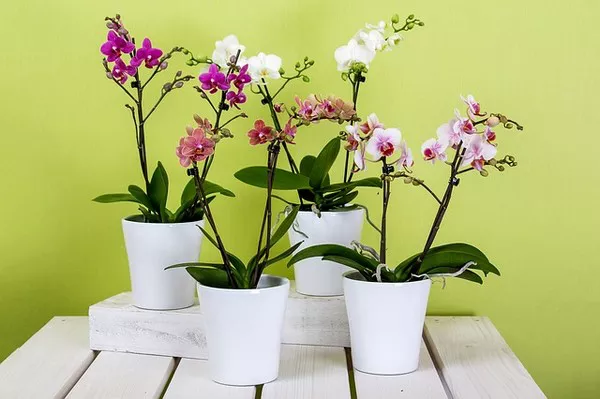Orchids, belonging to the family Orchidaceae, are a diverse and fascinating group of flowering plants that have captivated the human imagination for centuries. Renowned for their exquisite beauty, intricate structures, and vast variety, orchids stand as a testament to the wonders of nature. In this article, we will explore the characteristics, types, and cultural significance of orchids, shedding light on why these flowers continue to be a symbol of elegance and sophistication.
Botanical Features
Orchids are characterized by their unique reproductive structures and distinctive floral patterns. Unlike many other flowering plants, orchids possess a specialized reproductive organ known as the labellum or lip, which often serves as a landing platform for pollinators. Additionally, orchids are renowned for their bilateral symmetry, a feature that enhances their aesthetic appeal.
One of the remarkable aspects of orchids is their ability to adapt to diverse environments, ranging from tropical rainforests to arid deserts. With over 25,000 species and more than 100,000 hybrids, orchids showcase an unparalleled diversity, making them one of the largest and most widespread families of flowering plants.
Popular Types of Orchids
Orchids come in various shapes, sizes, and colors, and enthusiasts and botanists alike are continually fascinated by the sheer diversity within this family. Some of the most popular types of orchids include:
Phalaenopsis (Moth Orchids): Recognized for their large, showy blooms and ease of cultivation, Phalaenopsis orchids are a favorite among orchid enthusiasts. With a range of colors from pure white to vibrant pinks and purples, these orchids often serve as houseplants.
Cattleya Orchids: Known for their strikingly bold and fragrant flowers, Cattleya orchids have long been associated with elegance and refinement. They are popular choices for corsages and floral arrangements.
Dendrobium Orchids: Dendrobium orchids encompass a vast group of species that exhibit a wide array of flower forms and colors. Some are known for their pendulous sprays of blooms, while others boast vibrant hues and intricate patterns.
Oncidium Orchids (Dancing Lady Orchids): Recognizable by their distinctive lip that resembles a dancing figure, Oncidium orchids are cherished for their vibrant and numerous flowers. They are often used in floral displays and orchid gardens.
Lady Slipper Orchids (Paphiopedilum): Characterized by a pouch-like lip that resembles a slipper, Lady Slipper Orchids are known for their unique and captivating appearance. They are prized collector’s items among orchid enthusiasts.
Cultural Significance
Throughout history, orchids have held a special place in various cultures, symbolizing different attributes and sentiments. Some of the cultural significances of orchids include:
Beauty and Elegance: Orchids are frequently associated with beauty, grace, and refinement. Their intricate designs and vibrant colors make them a symbol of aesthetic perfection.
Love and Seduction: In Victorian times, orchids were often considered symbols of love and seduction. The exotic and alluring appearance of these flowers contributed to their association with romantic gestures and courtship.
Spirituality and Symbolism: In many Eastern cultures, orchids have deep spiritual significance. They are often associated with purity, perfection, and the transcendence of earthly desires.
Luxury and Status: Due to their rarity and beauty, certain orchids have been historically linked to luxury and social status. In ancient civilizations, the possession of rare orchids was seen as a sign of wealth and sophistication.
Conservation Efforts
Despite their popularity and widespread cultivation, many orchid species are currently facing threats in their natural habitats. Habitat loss, climate change, and illegal trade are among the factors contributing to the decline of wild orchid populations. Conservation efforts are crucial to preserving the rich diversity of orchids and ensuring their survival for future generations.
Botanical gardens, research institutions, and orchid enthusiasts actively participate in conservation initiatives, including seed banking, habitat restoration, and public awareness campaigns. By understanding the ecological importance of orchids and addressing the challenges they face, these efforts contribute to the overall conservation of biodiversity.
see also What Is February Birth Flower
Conclusion
Orchids, with their unparalleled beauty and diversity, continue to capture the hearts and imaginations of people around the world. From the elegant Phalaenopsis to the exotic Lady Slipper Orchids, each variety brings its own unique charm to the world of flowers. Beyond their aesthetic appeal, orchids hold cultural significance, symbolizing love, spirituality, and luxury.
As we appreciate the beauty of orchids, it is essential to recognize the importance of conservation efforts to preserve these remarkable plants. Whether cultivated in gardens or protected in their natural habitats, orchids enrich our lives and remind us of the wonders of the natural world. With continued care and conservation, orchids will continue to thrive, inspiring awe and admiration for generations to come.


